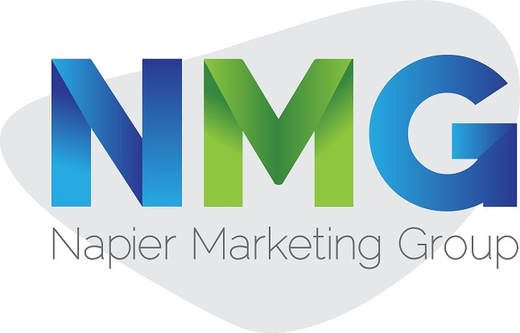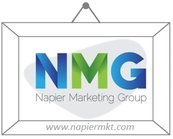How Can Google Ads Help You Transform Your Business?
Learn how Google Ads can drive your business forward. Maximize visibility, reach your target audience, and boost sales effectively.
Google Ads, formerly known as Google AdWords, is a key tool for businesses to advertise online. It lets you create and display ads in Google search results. In today's digital world, having a strong online presence is crucial for reaching your audience, and Google Ads helps you do just that.
With Google Ads, you get more visibility by appearing at the top of search results when people look for relevant keywords. This boosts website traffic, increases brand awareness, and drives leads and sales. Plus, you can target your ads precisely to reach the right audience based on demographics, location, interests, and behavior, ensuring your message reaches the most interested people.
Google Ads also provides detailed analytics, so you can track metrics like clicks, conversions, and costs, helping you make informed decisions and get the most out of your advertising budget. And with various ad formats available, including text, image, video, and shopping ads, you can create engaging ads that connect with your audience.
Understanding Google Ads
Google Ads offers a variety of ad formats to cater to different business objectives and target audiences. Here's an explanation of the primary types of Google Ads:
● Search Ads:
These are the text-based ads that appear at the top and bottom of Google's search engine results pages (SERPs) when users perform relevant searches. Search ads are typically triggered by specific keywords and allow businesses to reach users actively searching for their products or services.
● Display Ads:
Display ads come in various formats, including text, image, and rich media ads, and are displayed on websites and apps that are part of the Google Display Network (GDN). These ads can be targeted based on user interests, topics, placements, and demographics, making them ideal for building brand awareness and remarketing campaigns.
● Video Ads:
As the name suggests, video ads are designed to showcase products or services through visually engaging video content. These ads can appear before, during, or after other videos on YouTube and across the Google Display Network.
● Shopping Ads:
Also known as Product Listing Ads (PLAs), shopping ads showcase product images, titles, prices, and merchant information directly on Google's search results pages. They are particularly effective for e-commerce businesses, allowing users to easily discover and compare products.
● App Ads:
These ads are specifically designed to promote mobile apps and encourage users to download or engage with them. App ads can be displayed across various Google properties, including Search, Display, YouTube, and Google Play.
To determine the placement and ranking of ads, Google Ads uses an auction system that takes several factors into account. The primary determinants are:
● Bid Amount:
This is the highest price that an advertiser wants to pay for a click on its ad. Higher bids generally result in better ad positioning, but they are not the sole factor.
● Quality Score:
Google assigns a quality score to each ad based on its relevance, landing page experience, and expected click-through rate (CTR). Ads with higher quality scores are rewarded with better ad positions and lower costs per click.
● Ad Rank:
Google determines an ad rank by multiplying the bid amount by the quality score. Ads with higher ad ranks are typically displayed more prominently and have better chances of receiving clicks.
● Relevance:
Google considers the relevance of an ad to the user's search query or browsing context. Highly relevant ads are more likely to be shown and achieve better performance.
● Ad Extensions and Formats: Google may prioritize ads with extensions (such as call extensions, location extensions, or sitelink extensions) or specific ad formats (like shopping ads) that enhance the user experience.
Setting Up a Successful Google Ads CampaignDefine Your Goals and Target Audience
Before starting your Google Ads journey, it's crucial to establish clear and measurable objectives. Ask yourself:
Identifying your target audience is equally paramount. Google Ads offers powerful targeting capabilities, allowing you to reach your ideal customers based on:
Keyword Research and Selection
Keyword research is the key to a successful advertising campaign. It involves:
Tools like Google's Keyword Planner and third-party resources can aid in this process. When selecting keywords, consider:
Once you have a list of relevant keywords, organize them into tightly themed ad groups. This practice:
Creating Compelling Ad Copy
With your goals, audience, and keywords defined, it's time to craft attention-grabbing ad copy. Google Ads has character limits, so make every word count:
Compelling ad copy not only increases click-through rates but also sets expectations, leading to higher-quality traffic and better conversion rates.
Landing Page Optimization
Even the most compelling ads won't succeed if they don't lead to optimized landing pages. A well-crafted landing page is important for converting ad clicks into wanted actions:
Best practices for effective landing pages include:
Measuring and Optimizing Performance
Once your Google Ads campaigns are live, it's essential to continuously monitor and optimize their performance. Google Ads provides a wealth of data and insights to help you make informed decisions.
Key Performance Metrics:
Analyzing this data allows you to identify areas for improvement and optimize your campaigns accordingly.
Optimization Strategies:A/B Testing
Ad Scheduling
Campaign Restructuring
Best Practices and TipsTo truly utilize the potential of Google Ads and maximize the effectiveness of your campaigns, it's essential to follow industry best practices and use advanced techniques. Here are some expert tips to boost your Google Ads strategy:
Budget Management:
Ad Extensions:
Remarketing:
Advanced Techniques:Audience Targeting
Automated Bidding Strategies
Campaign Experiments
Continuously monitoring industry trends, attending webinars or conferences, and staying up-to-date with Google Ads updates and best practices can give you a competitive edge in the ever-evolving digital landscape.
Summary
In the changing world of online advertising, Google Ads stands as a powerhouse, offering businesses limitless opportunities to connect with their target audience, drive traffic, and achieve their marketing goals. By understanding the diverse ad formats, optimizing campaigns, and applying advanced strategies, businesses can achieve the full potential of Google Ads.
Whether you're a lead generation agency seeking to expand your client base or an e-commerce store aiming to boost sales, Google Ads provides the tools and insights to thrive in today's competitive digital landscape. Embrace the power of Google Ads and elevate your online presence to new heights.
With Google Ads, you get more visibility by appearing at the top of search results when people look for relevant keywords. This boosts website traffic, increases brand awareness, and drives leads and sales. Plus, you can target your ads precisely to reach the right audience based on demographics, location, interests, and behavior, ensuring your message reaches the most interested people.
Google Ads also provides detailed analytics, so you can track metrics like clicks, conversions, and costs, helping you make informed decisions and get the most out of your advertising budget. And with various ad formats available, including text, image, video, and shopping ads, you can create engaging ads that connect with your audience.
Understanding Google Ads
Google Ads offers a variety of ad formats to cater to different business objectives and target audiences. Here's an explanation of the primary types of Google Ads:
● Search Ads:
These are the text-based ads that appear at the top and bottom of Google's search engine results pages (SERPs) when users perform relevant searches. Search ads are typically triggered by specific keywords and allow businesses to reach users actively searching for their products or services.
● Display Ads:
Display ads come in various formats, including text, image, and rich media ads, and are displayed on websites and apps that are part of the Google Display Network (GDN). These ads can be targeted based on user interests, topics, placements, and demographics, making them ideal for building brand awareness and remarketing campaigns.
● Video Ads:
As the name suggests, video ads are designed to showcase products or services through visually engaging video content. These ads can appear before, during, or after other videos on YouTube and across the Google Display Network.
● Shopping Ads:
Also known as Product Listing Ads (PLAs), shopping ads showcase product images, titles, prices, and merchant information directly on Google's search results pages. They are particularly effective for e-commerce businesses, allowing users to easily discover and compare products.
● App Ads:
These ads are specifically designed to promote mobile apps and encourage users to download or engage with them. App ads can be displayed across various Google properties, including Search, Display, YouTube, and Google Play.
To determine the placement and ranking of ads, Google Ads uses an auction system that takes several factors into account. The primary determinants are:
● Bid Amount:
This is the highest price that an advertiser wants to pay for a click on its ad. Higher bids generally result in better ad positioning, but they are not the sole factor.
● Quality Score:
Google assigns a quality score to each ad based on its relevance, landing page experience, and expected click-through rate (CTR). Ads with higher quality scores are rewarded with better ad positions and lower costs per click.
● Ad Rank:
Google determines an ad rank by multiplying the bid amount by the quality score. Ads with higher ad ranks are typically displayed more prominently and have better chances of receiving clicks.
● Relevance:
Google considers the relevance of an ad to the user's search query or browsing context. Highly relevant ads are more likely to be shown and achieve better performance.
● Ad Extensions and Formats: Google may prioritize ads with extensions (such as call extensions, location extensions, or sitelink extensions) or specific ad formats (like shopping ads) that enhance the user experience.
Setting Up a Successful Google Ads CampaignDefine Your Goals and Target Audience
Before starting your Google Ads journey, it's crucial to establish clear and measurable objectives. Ask yourself:
- What do you want to achieve? Lead generation, increased sales, brand awareness, or a combination of goals?
- Defining your objectives from the outset will shape your strategy and help you measure success accurately.
Identifying your target audience is equally paramount. Google Ads offers powerful targeting capabilities, allowing you to reach your ideal customers based on:
- Demographics (age, gender, location)
- Interests and online behaviors
- For instance, if you're a local business, leverage location targeting to display ads to users within your geographic area.
Keyword Research and Selection
Keyword research is the key to a successful advertising campaign. It involves:
- Identifying the most relevant and high-performing keywords aligned with your offerings and target audience's search queries.
- Uncovering valuable insights into user intent and ensuring your ads appear when potential customers are actively searching.
Tools like Google's Keyword Planner and third-party resources can aid in this process. When selecting keywords, consider:
- Search volume
- Competition
- Relevance to your business
Once you have a list of relevant keywords, organize them into tightly themed ad groups. This practice:
- Ensures high relevance between your ads, landing pages, and keywords in each ad group.
- helps reduce click-through rates and improve quality scores.
Creating Compelling Ad Copy
With your goals, audience, and keywords defined, it's time to craft attention-grabbing ad copy. Google Ads has character limits, so make every word count:
- Write headlines and descriptions that speak directly to your target audience's pain points, desires, or interests.
- Strategically incorporate relevant keywords to signal relevance, but avoid keyword stuffing.
- Highlight your unique selling proposition (USP) or special offers to stand out from competitors.
Compelling ad copy not only increases click-through rates but also sets expectations, leading to higher-quality traffic and better conversion rates.
Landing Page Optimization
Even the most compelling ads won't succeed if they don't lead to optimized landing pages. A well-crafted landing page is important for converting ad clicks into wanted actions:
- Ensure high relevance between the landing page content, ad copy, and keywords used.
- The message and visuals should match perfectly with the user's goals set by the ad.
Best practices for effective landing pages include:
- A clear and compelling value proposition
- A strong call-to-action (CTA)
- A clean, user-friendly design guides visitors toward conversion.
- Trust signals (customer testimonials, security badges) to build confidence and credibility
Measuring and Optimizing Performance
Once your Google Ads campaigns are live, it's essential to continuously monitor and optimize their performance. Google Ads provides a wealth of data and insights to help you make informed decisions.
Key Performance Metrics:
- Click-Through Rate: The percent of individuals who clicked on your ad after viewing it. A high CTR indicates compelling ad copy and relevance.
- Conversion Rate: The percentage of ad clicks that resulted in a desired action (lead, sale, etc.). This metric measures the effectiveness of your landing pages and overall campaign.
- Cost Per Conversion: The average amount you paid for each conversion. This helps gauge the return on investment (ROI) of your campaigns.
- Other metrics to track include impressions, clicks, average position, and quality score.
Analyzing this data allows you to identify areas for improvement and optimize your campaigns accordingly.
Optimization Strategies:A/B Testing
- Test different ad copy, landing pages, or targeting options to see what resonates best with your audience.
- Run experiments and let data guide your decisions on which variations to keep or discard.
- Bid Adjustments
- Increase bids for high-performing ad groups or keywords to improve ad positioning and visibility.
- Decrease bids for underperforming elements to reduce costs.
Ad Scheduling
- Schedule your ads to run during peak hours or days when your target audience is most active.
- This ensures your ads are shown at the right time, improving relevance and performance.
- Audience Targeting Refinements
- Continuously refine your audience targeting based on performance data.
- Add or exclude specific interests, demographics, or behaviors to better align with your ideal customer profile.
Campaign Restructuring
- If needed, restructure your campaigns by reorganizing ad groups, adding new keywords, or revising ad copy and landing pages.
- A well-structured campaign improves relevance and quality scores, leading to better results.
Best Practices and TipsTo truly utilize the potential of Google Ads and maximize the effectiveness of your campaigns, it's essential to follow industry best practices and use advanced techniques. Here are some expert tips to boost your Google Ads strategy:
Budget Management:
- Set a realistic and flexible budget aligned with your business goals and resources.
- Monitor your budget closely and make adjustments as needed to avoid overspending or underspending.
- Utilize budget management tools like shared budgets, budget explorers, and automated rules to maintain control over your spending.
Ad Extensions:
- Ad extensions provide additional information and interactive elements to your ads, improving visibility and click-through rates.
- Leverage extensions like sitelink extensions (linking to specific pages), callout extensions (highlighting unique offerings), and call extensions (allowing click-to-call functionality).
- Test different combinations of extensions to see what resonates best with your audience.
Remarketing:
- Remarketing allows you to show ads to users who have previously interacted with your website or engaged with your business.
- Set up remarketing campaigns to re-engage with past visitors, nurture leads, and encourage conversions.
- Use dynamic remarketing to display personalized ads based on a user's previous browsing behavior and product interests.
Advanced Techniques:Audience Targeting
- Leverage in-market and affinity audiences to reach users based on their specific interests and purchase intent.
- Create custom audiences based on website visitors, customer email lists, or similar audiences to your best customers.
Automated Bidding Strategies
- Explore smart bidding strategies like Target CPA (cost per acquisition) or Target ROAS (return on ad spend) to optimize bids automatically based on your desired outcomes.
- These strategies use machine learning to adjust bids in real-time, maximizing conversions or revenue while staying within your target.
Campaign Experiments
- Use campaign experiments to test different campaign settings, ad copy, landing pages, or targeting options against each other.
- This data-driven approach helps identify the best-performing variations and optimize your campaigns accordingly.
Continuously monitoring industry trends, attending webinars or conferences, and staying up-to-date with Google Ads updates and best practices can give you a competitive edge in the ever-evolving digital landscape.
Summary
In the changing world of online advertising, Google Ads stands as a powerhouse, offering businesses limitless opportunities to connect with their target audience, drive traffic, and achieve their marketing goals. By understanding the diverse ad formats, optimizing campaigns, and applying advanced strategies, businesses can achieve the full potential of Google Ads.
Whether you're a lead generation agency seeking to expand your client base or an e-commerce store aiming to boost sales, Google Ads provides the tools and insights to thrive in today's competitive digital landscape. Embrace the power of Google Ads and elevate your online presence to new heights.



